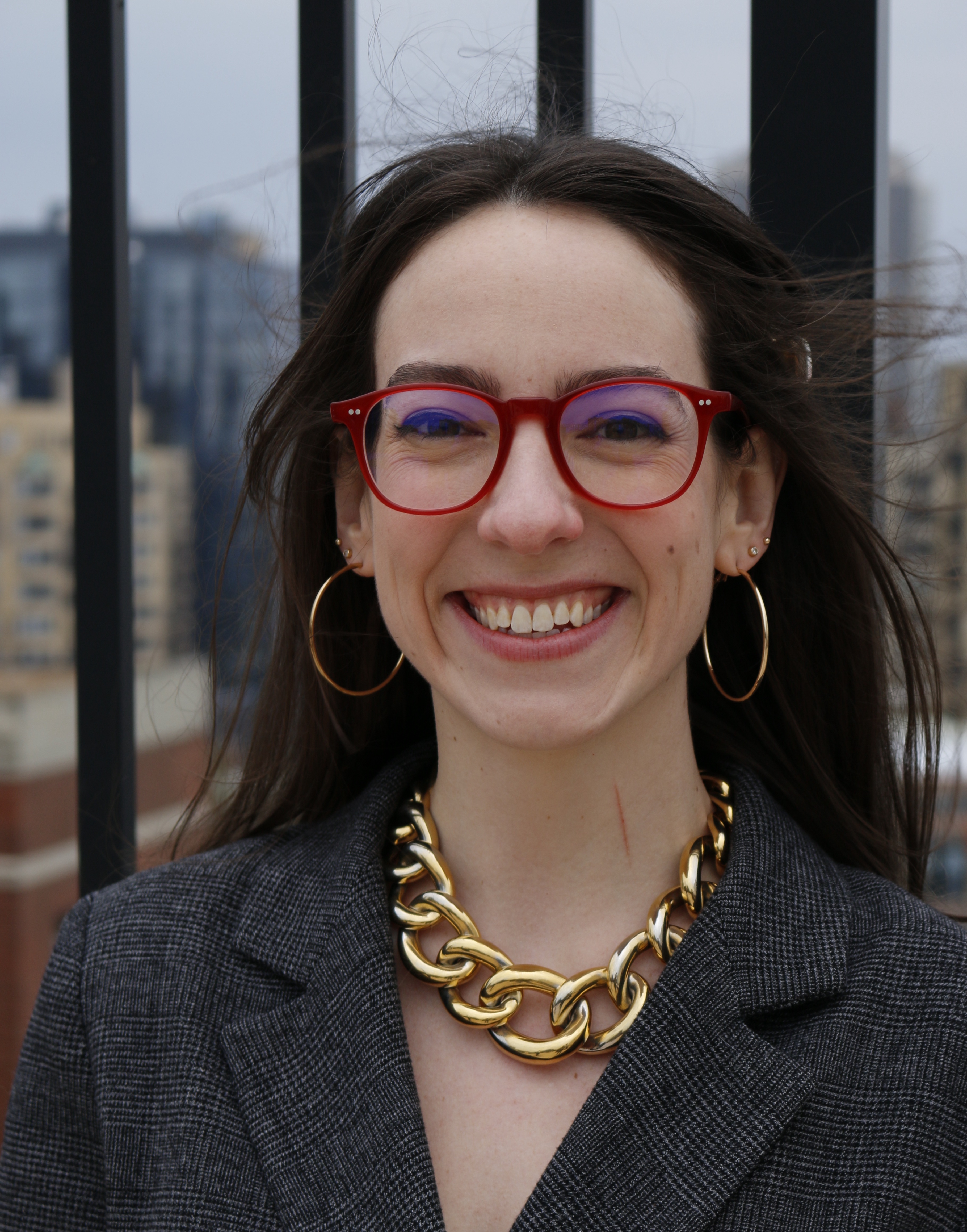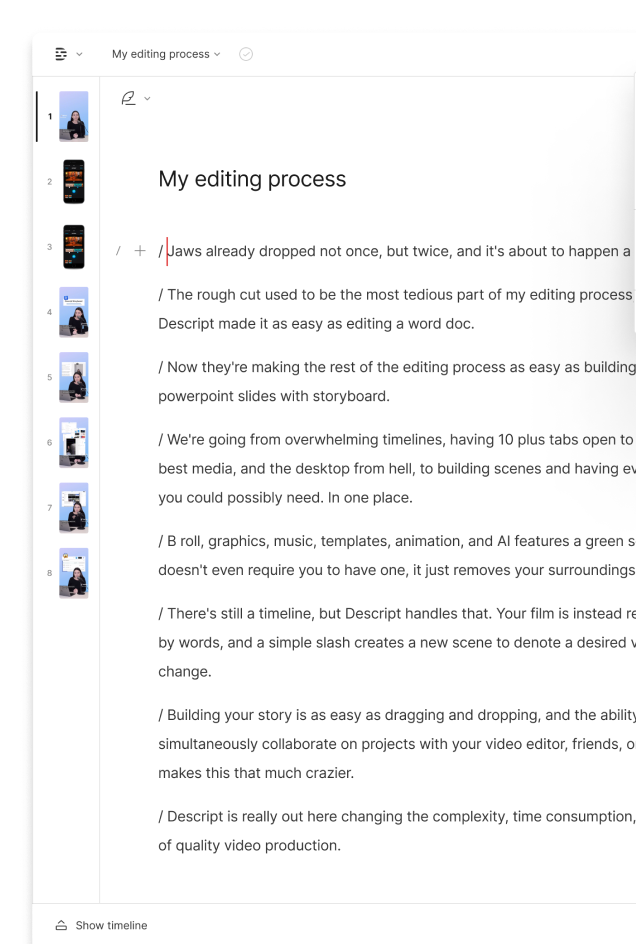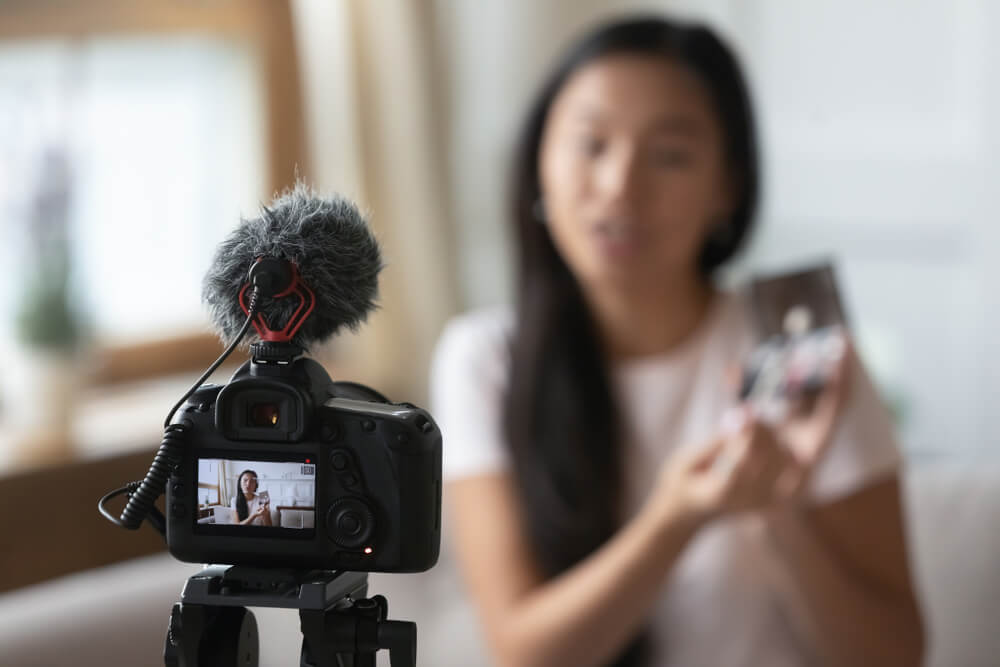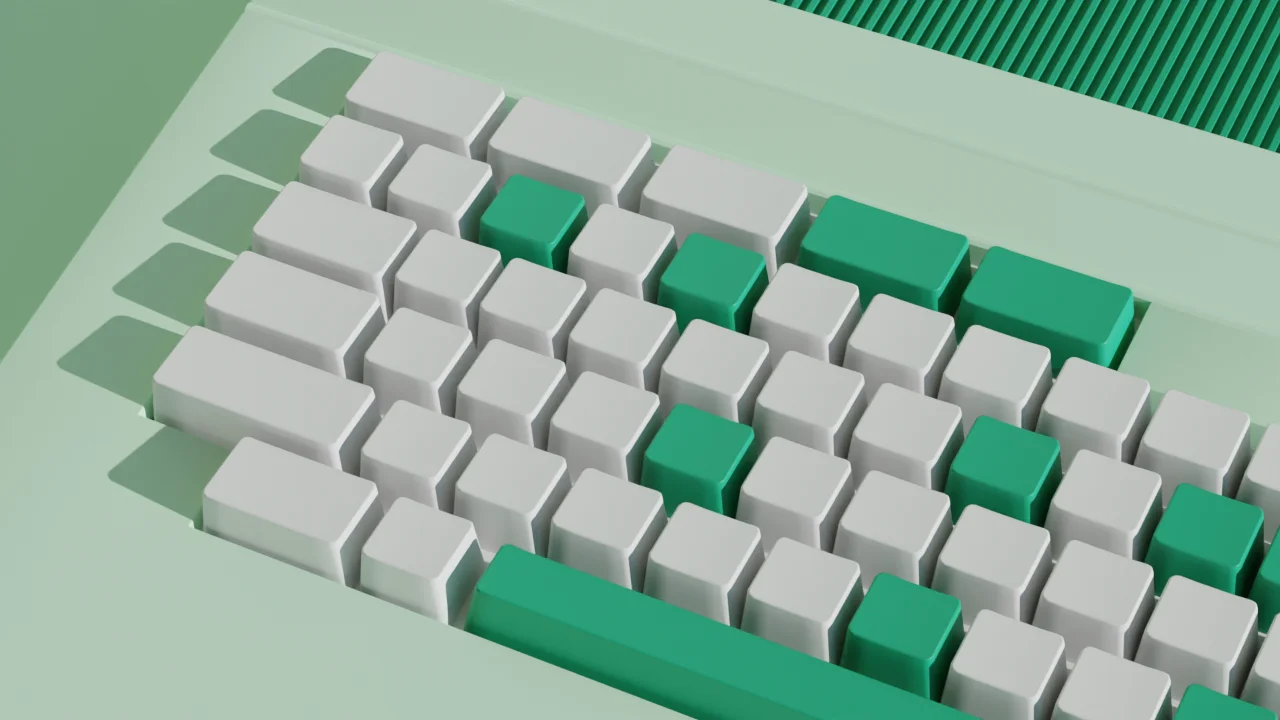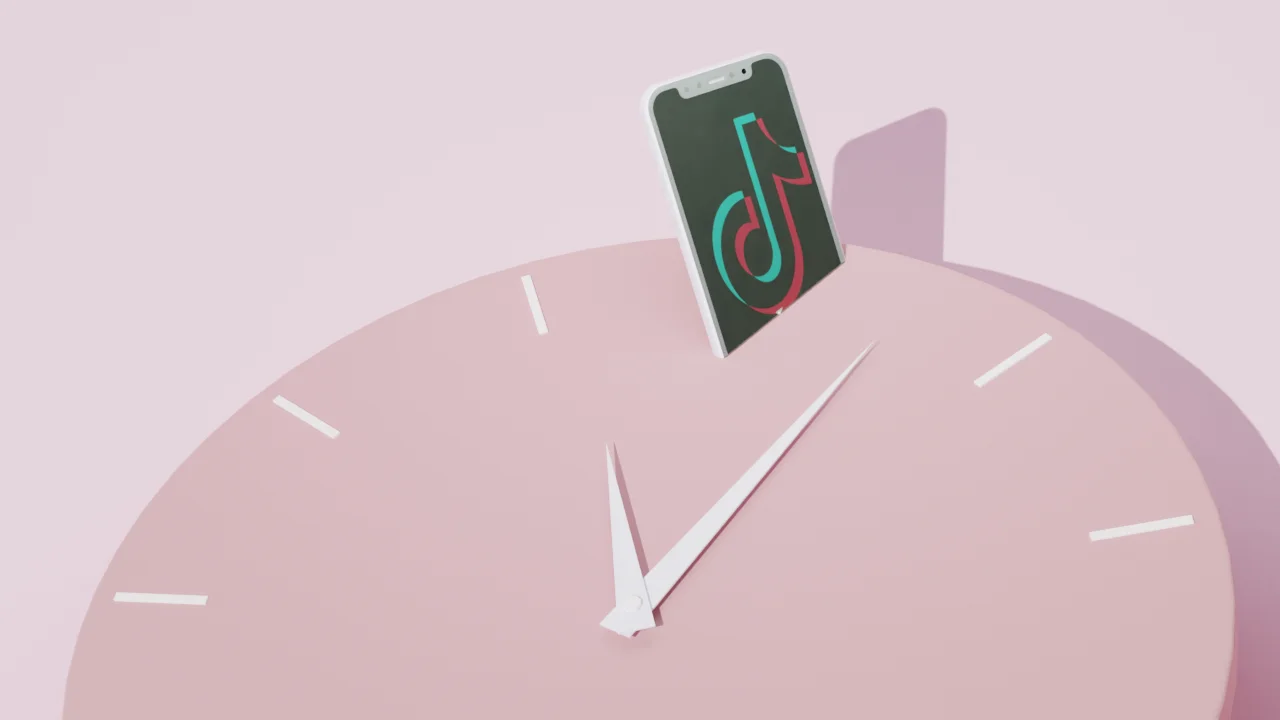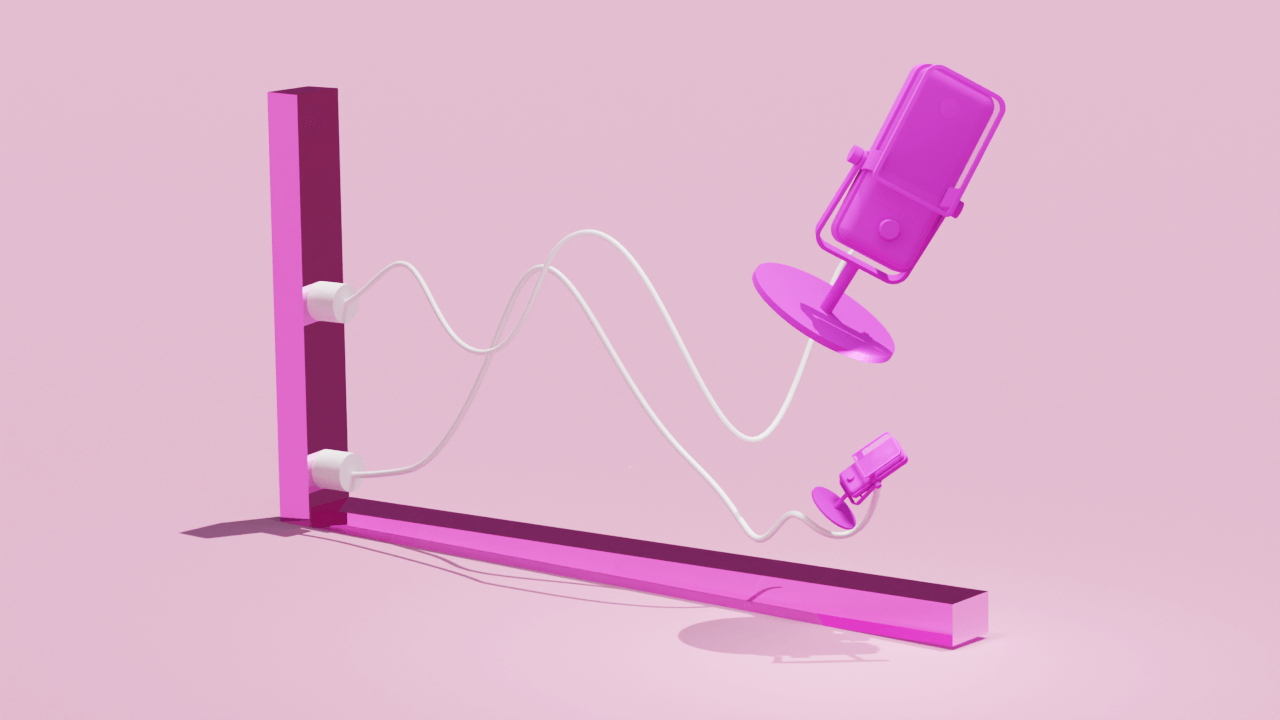What type of content do you primarily create?




Because a podcast is an audio-first experience, it’s important to have a rich soundscape. This means quality microphones, catchy jingles, and — if you're looking to add a little something extra to your podcast — sound effects.
Sound effects can help set the tone for your episode, emphasize certain points, or create a more immersive experience for your listeners. If you’re a new podcaster, that’s a lot of pressure. But stick with us, and we’ll have you mastering the art of how to add sound effects to your podcast in no time.
Jumping in: what are sound effects?
Sound effects (more commonly referred to as “SFX”) are the recorded sound cues that help podcasters tell a story. These sounds can be anything: a quick melody, little riffs, or background noises (like cities or crowds).
Sound effects flesh out the world for an audience, suggest a mood for the scene, and can even be assigned to specific characters, events, or locations. While some sound effects are necessary, others just add an artistic touch to the story.
You can add hundreds of little sounds and melodies to your podcast, but there are three main sound effects any polished episode uses. These are:
- A stinger or bumper: a short clip of music used in the podcast intro or outro, or as a transition between sections.
- A sweeper: a pre-recorded voiceover segment that helps move the podcast along, often transitioning between different topics or segments.
- A transition: a sound effect, usually musical in nature, that helps smoothly move from one point to another.
Pro sound effects
There are two ways to get sound effects: you can license them or you can create them yourself.
Unless you’re working with a major production company, you’re probably going to rely on licensing. There are plenty of sound effect library memberships or bundled packs you can purchase for commercial use. We recommend checking out Envato Elements — for only $200 / year you can get access to unlimited stock sound effects (not to mention photos, music, videos, and more).
If you’re looking to license on a budget, there are some great royalty-free sound effects libraries out there, like PremiumBeat, ZapSplat, SoundBible, or Freesound.
If you do want to try to create your own sound effects, well, good luck. Creating sound effects has less to do with what something actually sounds like and more to do with what an audience expects to hear. You have to deliver the exact sound an audience is anticipating in order to maintain their suspension of disbelief. You’ll need a recorder, microphone, and cable, and make sure you pay attention to your audio levels to prevent clipping. Also, we recommend you record the sound from three different distances so you can have options when it comes time to edit.
Play around with unexpected sounds and see what you like — even the most basic household objects can surprise you.
The process
Editing sound effects in your podcast is a bit of an art and a bit of a science, especially when you’re trying to balance sound effects with music.
It doesn’t make much sense to start on sound effects until your content edits are done. Otherwise, you could spend hours perfecting the sound design of a scene only to cut it out entirely a week later. You can always add placeholder sounds as you edit, though, as a reminder of what you want to use down the road.
Once your audio is locked and loaded, we recommend you start by listening to it all the way through and noting the timecodes when SFX are needed, a process known in the video world as “spotting.” Pay attention to moments when your ears perk up and notice noises are too quiet or missing altogether. From there, you can either create your sounds or hunt them down on the web.
Once you have your recorded sound effects, start playing around with them. There are a few different techniques you can use here, like layering multiple sounds on top of each other or adding filters.
Sound filters
Most audio effects can be broken down into four main categories: modulation, time-based, spectral, and dynamic. Here are some of the most common processor techniques out there:
Modulation
- Chorus: An audio effect where similar but varying sounds are heard as one. Example: Layering multiple voices all singing the same lines to create a choir performing one singular song.
- Tremolo: Changing the amplitude of a track to make it sound like it’s “trembling.” Example: Volume being raised and lowered to match a person’s heartbeat.
- Flanger and Phaser: A copy of a sound is added to the original sound with a constantly varying short delay where one of the copies gets phase shifted (aka synths). Example: Manipulating a human’s voice to sound like a robotic cyborg.
- Pitch Shifting: Used to shift the pitch of a sound up or down. Example: Making a normal animal noise sound like a deep growl.
Time-based
- Delay and Echo: One or more delayed sounds are repeated from the original sound. Example: Replicating the echo that comes from yelling into a canyon.
- Reverb: When large numbers of delayed sounds are mixed over several seconds, mimicking sounds bouncing off of reflected surfaces. Note: while similar to echo, reverb has a shorter "bounce" time. Example: Making a vocalist sound like they're singing in the shower.
Spectral
- Panning: Making the track sound like it’s moving from one space to another. Example: Altering a siren to sound like it’s coming in on the left and quickly racing to the right.
- Equalization (EQ): Your audio recording has frequencies ranging from low to high. With EQ, you can either cut (attenuate) or boost (amplify) certain frequencies. Example: Boost the lower frequencies and cut out higher frequencies of an audio recording to make it sound like it’s coming through a telephone.
Dynamic
- Distortion/Overdrive: Adding gain to an audio signal and pushing it beyond its peak. Basically, it’s a “make this sound crappy” effect. Example: Making a radio sound old-timey.
- Compression: Reduces the dynamic range of signals so both loud and quiet elements can be heard clearly. In simple terms, it makes the loud parts of an audio signal quieter and the quiet parts louder. Example: Lowering elements of a person’s voice so it sounds like it’s coming from a different room.
Keep in mind that a lot of these sound filters are best when they’re mixed with one another — to get the perfect old-timey radio voice, you’ll probably have to adjust EQ, distortion, and compression.
Tiff Bauer, a former video producer at Descript, recommends experimenting. “If you need to add footsteps…download five footstep sounds and ‘audition’ each one.” Sound design with SFX is a lot of trial and error, so don’t be afraid to click around and see what you come up with.
